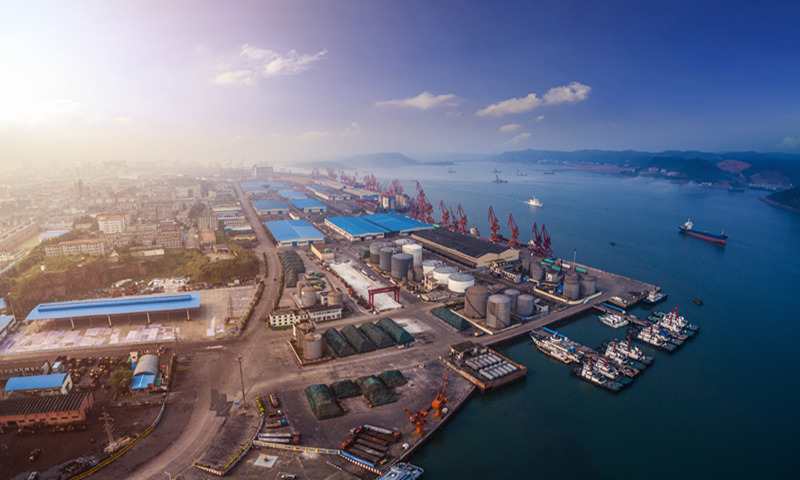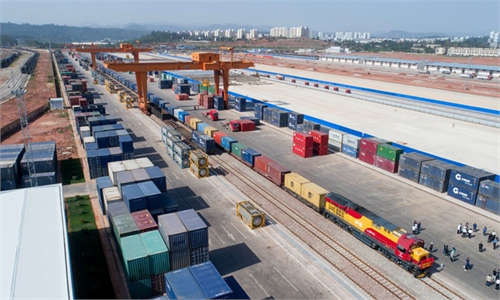
Fangcheng Port in South China's Guangxi Zhuang Autonomous Region, which sits on the New International Land-Sea Trade Corridor route connecting Southwest China's Chongqing Municipality, the ASEAN and Singapore Photo: VCG
The Ministry of Transport has decided to set up a special office to oversee the operation of the New International Land-Sea Trade Corridor, a major trade channel between western Chinese provinces and ASEAN countries, according to the ministry's official website on Wednesday.
It is expected that the expansion of cross-border transport routes will deeply connect the markets, resources and industries of countries and regions along the routes and create development opportunities for China and ASEAN countries, experts said.
The Ministry of Transport said it has listed the work to promote the construction of a comprehensive transportation system for the trade corridor as a key task to serve the construction of a new development pattern, and it has told member units to strengthen coordination, give full play to the respective advantages of the central and local governments, and continuously promote the high-quality development of the western land-sea corridor.
The New International Land-Sea Trade Corridor is a trade and logistics passage jointly built by ASEAN countries and provincial-level regions of western China. Southwest China's Chongqing municipality is the center of operations for the corridor, according to the Xinhua News Agency.
Among the key tasks this year, the Ministry of Transport has stressed expanding the transport capacity of the trade corridor, promoting key projects such as railways, highways, ports and civil aviation, speeding up the international hub cluster centered on the Chengdu-Chongqing economic circle, and raising the level of opening-up and trans-regional transport cooperation.
The special office will help coordinate the resources of all provinces and departments to promote the high-quality development of the route, provide a convenient channel for exports from China's western regions, and expand the opportunities for cooperation among China's vast western regions and ASEAN countries, Bai Ming, deputy director of the International Market Research Institute at the Chinese Academy of International Trade and Economic Cooperation, told the Global Times on Wednesday.
"The corridor offers a faster alternative for western Chinese provinces compared with transporting goods via the east coast," Bai said.
With the help of the corridor, fruit, rice, fresh food and other products from ASEAN countries can be quickly put on the shelves of Chinese supermarkets while cars, spare parts and other products made in western China can enter the ASEAN market.
"Compared with provinces in eastern China, the development level of industry chains in western China is more compatible with ASEAN countries, which offers wide potential for cooperation," Bai said.
From January to May, the land-sea freight route transported 310,000 standard containers worth of cargo, a notable year-on-year increase of 37.7 percent, according to the China Railway.
Separately, another major breakthrough has been made on China's southwest trade route.
The China-Laos Railway, half a year into its operation, had delivered more than 4 million tons of freight as of June 2. The transport volume of cross-border cargo was 647,000 tons during the period, according to the China State Railway Group Co.
Global Times

